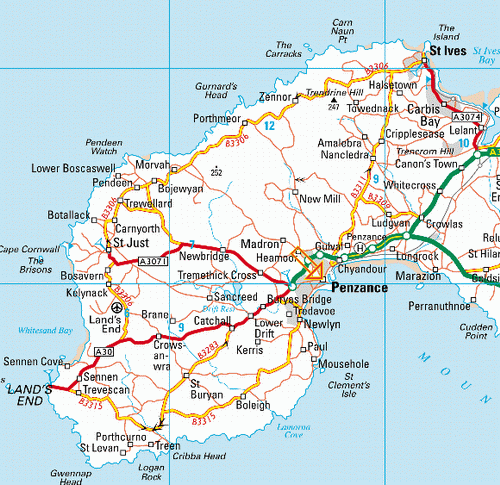
|
Map Extract ... Cornwall ... England x This map and the ones below show the area of Cornwall where "The Penberthy Story" took place x x Places that are mentioned below include
|
|
NOTE #01 - this page tells the story of a number of generations
of the Penberthy Family ... there are lots of 'dates-and-details'
and these are interspersed with a number of pictures of how their
lives may have been ... therefore the page may take a few extra
seconds to download completely so be patient and let it finish
before scrolling down ... it's a fascinating story !! NOTE #02 - the original copy of the following story is held by Lesley ... it is written in the "first person narrative" but as this could become confusing, these references have been removed in the notes below NOTE #03 - the story was not signed so the author is unknown ... however, he or she referred a number of times to how they are related to the various families and from this it can be established that he or she is of the same generation as Sharon and her brothers and sisters --------------------Email received on Thursday 5th May 2011 --------------------Hi cousin Geoff ... I am your wife's cousin, Wally Knowles --------------------Have just seen your HUGE work on the Coudrey family, etc ... what a magnificent job ! --------------------In the Penberthy section, you have a section on the Cornwall ancestors --------------------You state that you don't know who the author was, although you said it must be one of the family --------------------This has been lifted from an article written by me ... no complaint, just stating the fact NOTE #04 - this story goes all the way back to the 1400's ... a terrific piece of Family History !! NOTE #05 - the pictures and photos that are included below are some that I found while researching and building this page |

|
Map Extract ... Cornwall ... England x This map and the ones below show the area of Cornwall where "The Penberthy Story" took place x x Places that are mentioned below include
|
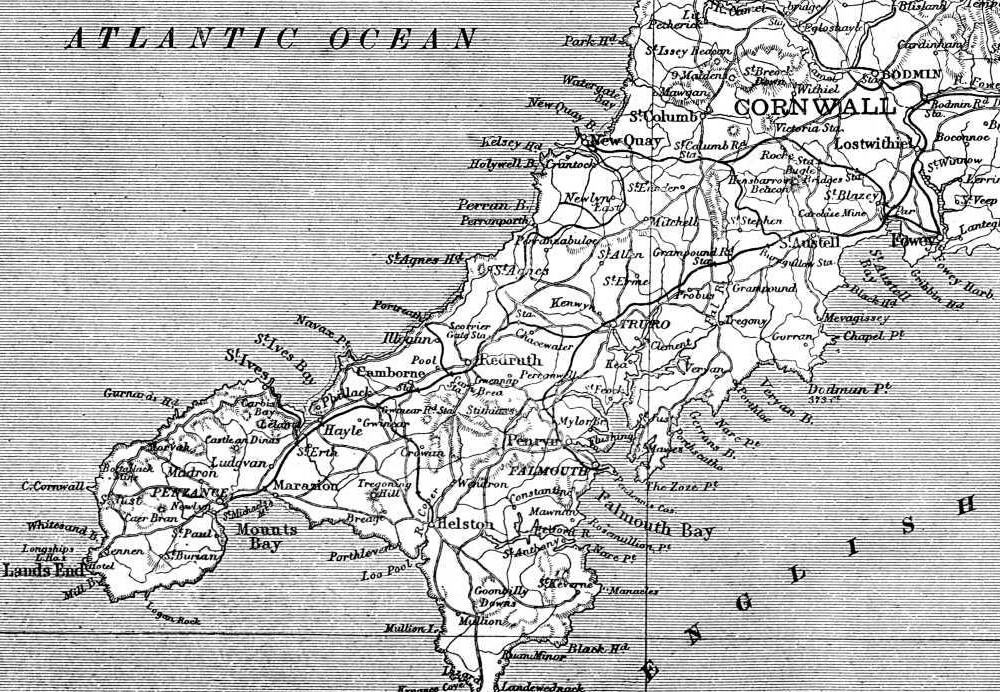
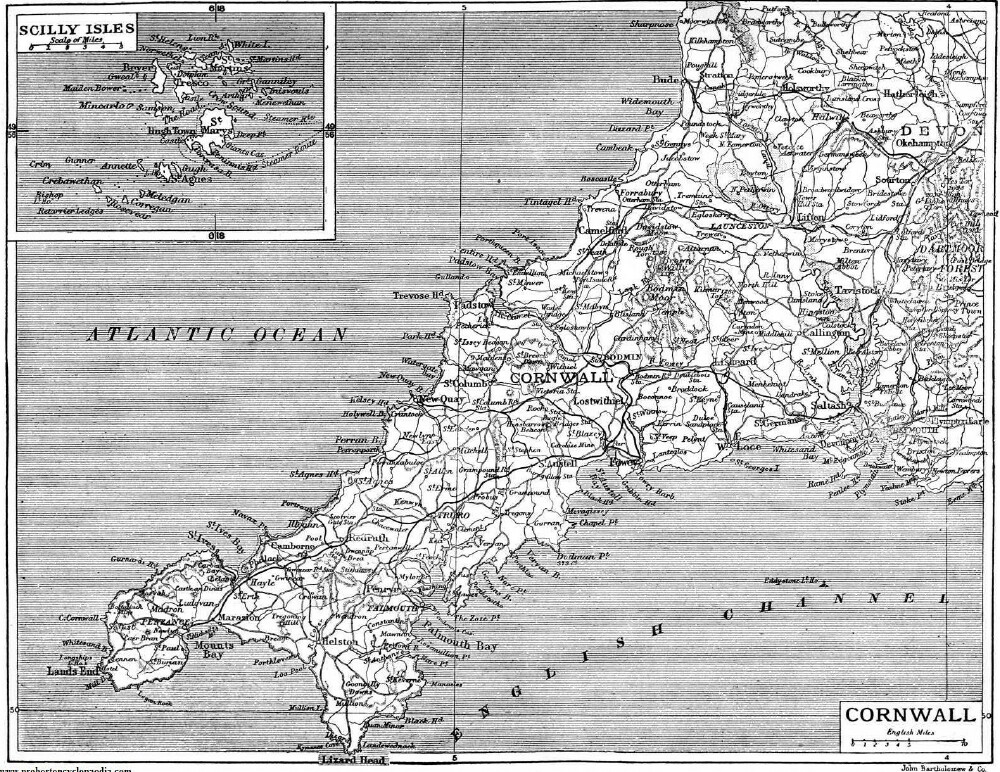
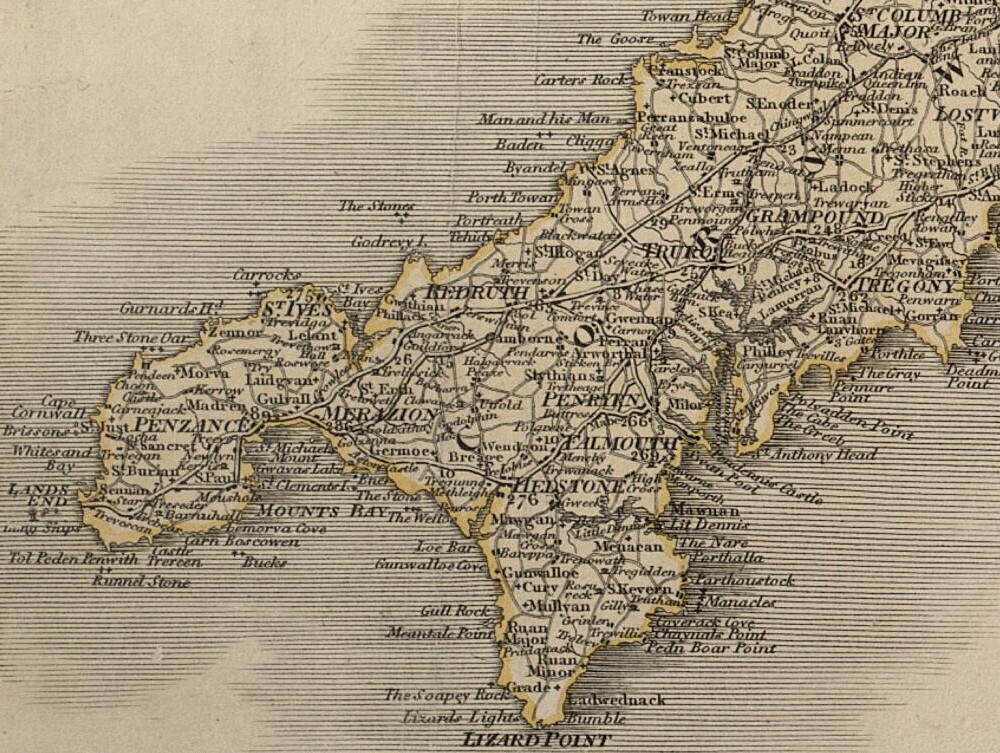
|
x Section #150 on the |
"In the Beginning" x |
|
PART ONE ... The Surname of Penberthy Recorded in the
spellings of Penberthy and Penbarthy, this is an English and
specifically Cornish, locational surname PART TWO ... Penberth Penberth is a coastal village
and cove on the Penwith Peninsula in Cornwall United Kingdom
On the west coast of Cornwall,
in the West Penwith area, not more than a few miles from Porthcurno,
there lies in a valley, a picturesque hamlet called Penberth,
comprising of a small number of cottages and a natural harbour
which protects it from the rough seas of the Land's End peninsula PART THREE ... Church of St Erth ... Reverend Penberthi Click HERE and HERE for more information on this Church
There was also a Reverend Penberthi
in charge of the Church of St Erth from 1455 to 1460 |
|
x Section #139 on the |
x Joh'es Penberthie 'Unknown' |
|
Subsidy Rolls Subsidy Rolls are records of taxation in England made between the 12th and 17th centuries The earliest documentary evidence
of the name is to be found in the Subsidy Rolls of 1597 and 1599,
used by the King to raise revenues |
|
x Section #126 on the |
x Willmus Penberthie 'Unknown' |
|
Subsidy Rolls Subsidy Rolls are records of taxation in England made between the 12th and 17th centuries The Subsidy Rolls of 1624 list a Willmus Penberthie of Uny Iuxta Lelant as paying in bonis, three pounds |
|
x Section #116 on the |
x William Penberthy 'Unknown' |
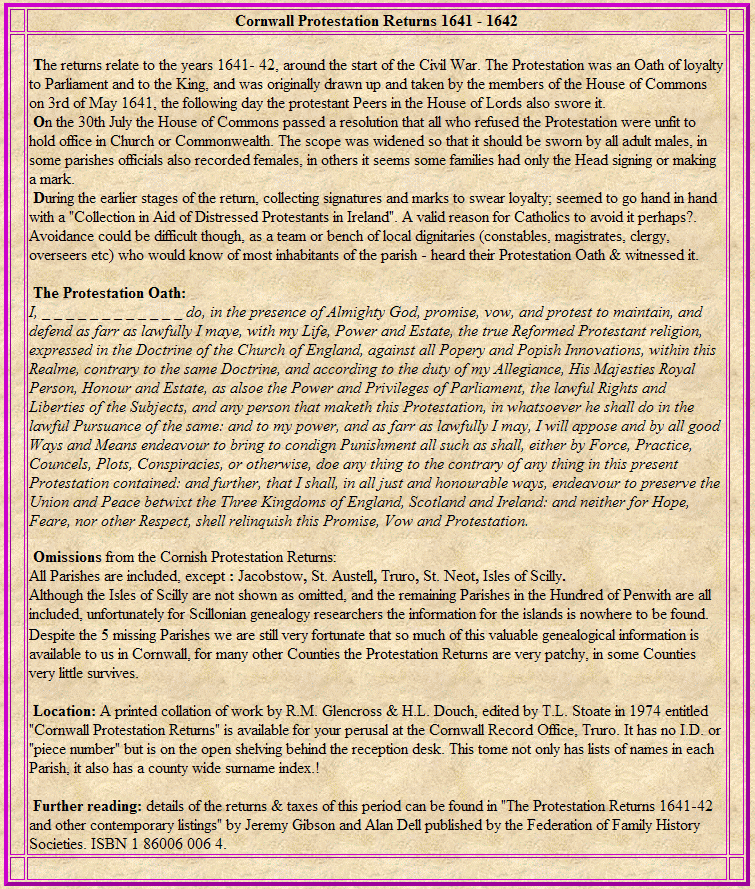 In the Cornwall Protestation
Returns of 1641, four Penberthys are listed ... William, James,
John and William |
|
x Section #106 on the |
x William Penberthy 'Unknown' |
|
In the Borough Accounts of St Ives of 1685, Mayor Thomas Trenwith lists ... to give the Deputy Lewten notice of the arrival of Monmouth's ship, five shillings"
This related to the Duke of
Monmouth's Rebellion, when he landed at Lyme in Dorset, in an
attempt to take the English Crown from the Catholic King James
the Second
William Penberthy was Burger
of St Ives and is mentioned in the Charter given by James the
Second to the town of St Ives in 1685, giving it Borough status |
|
x Section #096 on the |
x William Penberthy Grace Pearce |
William's son, William, was a miner and married Grace Pearce at St Just on 31st December 1709
They had four children |
|
x Section #087 on the |
x William Penberthy Sarah Penberthy |
|
William and Grace's son, William,
was sent out to work in the mines at a very young age to help
supplement the family's income
The couple had six children |
|
x Section #076 on the |
x William Penberthy Hannah Stephens |
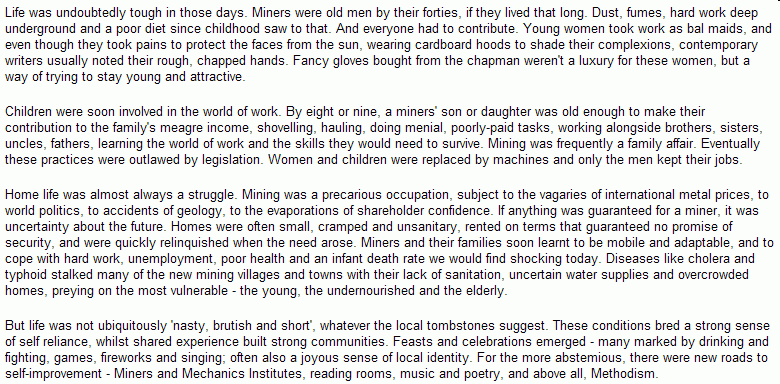 NOTE
- in reference William and Sarah Penberthy above - it is being
presumed that the first William, born 7th March 1740, died early
in his life
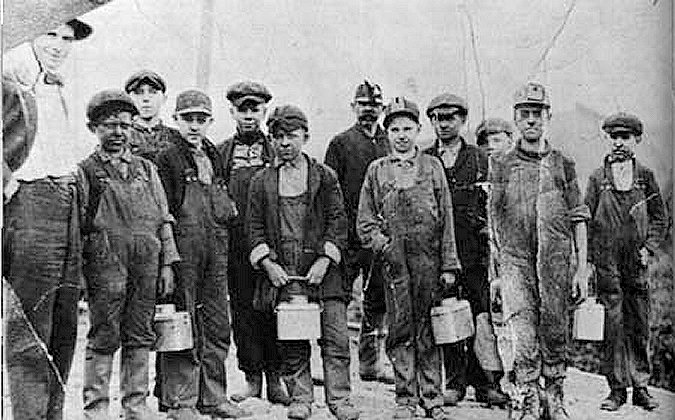 Through his hard labour as a miner, William
was able to invest in various mines within the parishes of Uny
Lelant and St Ives |
|
x Section #066 on the |
x William Penberthy Catherine Nicholls |
|
William and Hannah's son, William, having been born in 1769, like many other Cornishmen worked in the mines from a very young age alongside his father and brothers 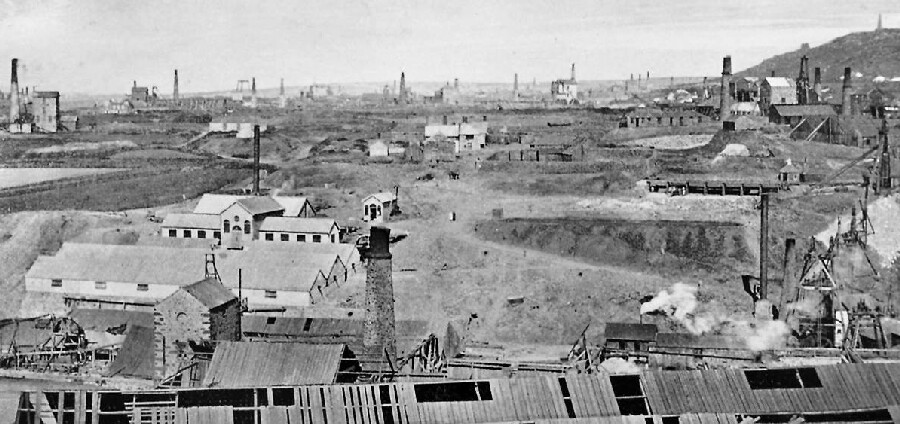
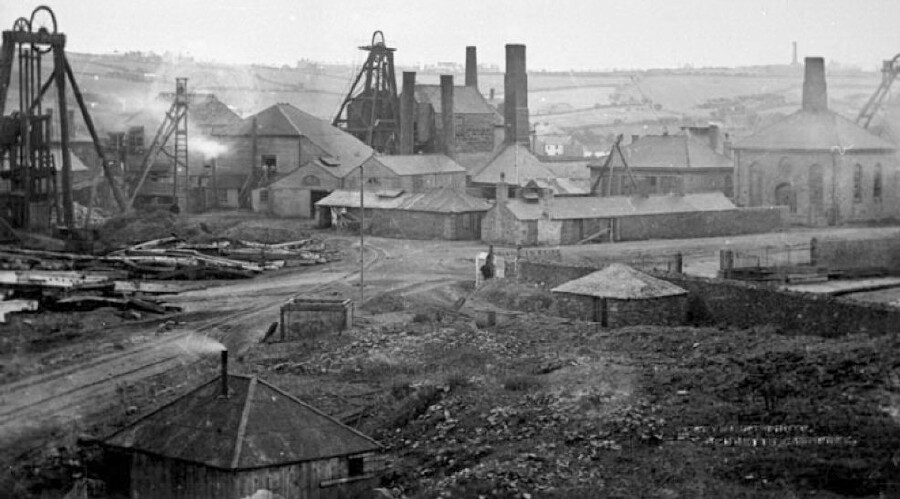 At Uny Lelant Church on the 11th June 1793
he married Catherine Nicholls, who was born around 1770 in St
Ives Cornwall |
|
x Section #058 on the |
x Isaac Penberthy Christiana Martins |
|
No doubt young Isaac started work at an early
age as a surface worker at one of the mines near his home at
Lelant St Ives, perhaps at the Wheal Marey Fox which his Uncle
Charles had a major shareholding in
The couple had a productive union ... in twenty
one years of marriage, Christiana delivered twelve children |
|
x Section #048 on the |
x John Rowe Elizabeth Penberthy |
|
x Section #039 on the |
x James Hodge Christiana Penberthy
Rowe |
|
Elizabeth's daughter, Christiana Penberthy
Rowe, married James Hodge, who was born 16th April 1854 at Calstock
Cornwall
James had arrived in Australia on the schooner
"Earl of Dalhousie" which berthed at Port Adelaide
on 12th January 1874  The couple had nine children
James worked in the mines at Moonta until
about 1885 and then shifted to Melbourne, a journey of six hundred
and fifty miles |